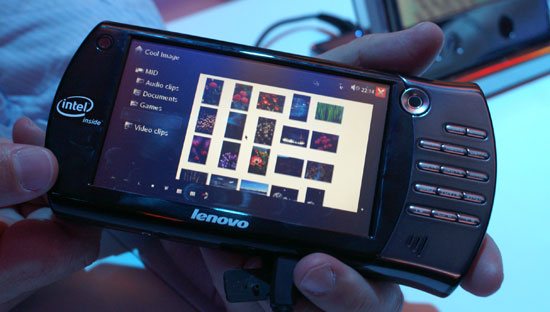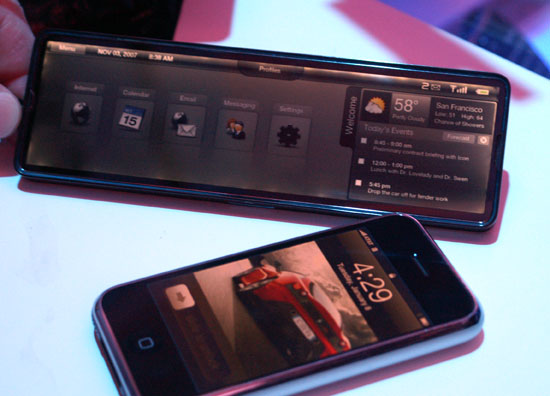Intel's Menlow Revealed: Baby Centrino Gets Ready
by Anand Lal Shimpi on January 9, 2008 12:00 AM EST- Posted in
- CPUs
Taking on ARM with Moorestown
While Menlow uses a more traditional PC setup (cpu + chipset), its successor due out in 2009/2010 won't. Moorestown, like Menlow, is a two-chip design - composed of a north hub and a south hub. The north hub features the CPU, memory controller and graphics, while the south hub is just I/O. This should sound a lot like AMD processors today, but there's one key differentiator: the south hub won't support the PCI bus.

The lack of PCI support is purely a power savings measure; while Intel expects Menlow to be far faster than the ARM platforms used in smartphones today (approximately 2x the performance of what's in the iPhone), ARM will continue to have a significant power consumption advantage.
The ARM power consumption advantage comes from two places: active power and idle power. Intel plans to make significant improvements in active power over the coming years, eventually bringing parity with ARM but it will take some time. These improvements will come via architectural changes as well as improvements in manufacturing processes.
The idle power reduction will come through highly integrated platforms, like what we're describing with Moorestown. By getting rid of the PCI bus and replacing it with Intel's own custom low-power interface, Intel hopes to get idle power under control. The idea is that I/O ports will only be woken up when needed to (similar how the data lines on the Centrino FSB function), and what will result are platforms with multiple days of battery life when playing back music.
While there will still be some Menlow devices that run Windows, Intel expects all Moorestown devices to run Linux.
While there will still be some Menlow devices that run Windows, Intel expects all Moorestown devices to run Linux.

Intel expects that in 2 - 3 years, thanks to reduction in die size and thermals, that it will be in a device the size of the iPhone. Until then we'll have to deal with larger MIDs for Menlow and the candy bar form factor we saw at last year's IDF.










22 Comments
View All Comments
PandaBear - Wednesday, January 9, 2008 - link
I don't understand why would Intel try to force x86 down a portable device that runs on Linux. For Windows I can understand but ARM (and almost every other architecture out there) can run Linux and in an embedded device you don't want to have the cost and power consumption much more than ARM.Given the fact that ARM based solution are so efficient power wise, and that there are already many ARM based ASIC out there, I don't understand why (other than politics) would Intel want to go the x86 road. They should develop a similar low power RISC core and hardware accelerated ASIC around it instead.
What I sense is that they don't want x86 to go away when non PC take over the Internet browsing and mobile market takes off. So they give you something that is just good enough to hang on to rather than going to an all new platform like iPhone. Without a true Windows (with good usability) this won't help much.
defter - Thursday, January 10, 2008 - link
Intel had a low-power RISC core called StrongARM several years ago, but they decided to sell that...It seems that Intel feels it's important that small mobile devices use the same instruction set as desktop PCs.